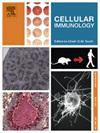Differential roles of regulatory T cells in Alzheimer's disease
Abstract
Regulatory T (Treg) cells interact with a variety of resident cells and infiltrated immune cells in the central nervous system (CNS) to modulate neuroinflammation and neurodegeneration. Extracellular amyloid-β (Aβ) peptide deposition and secondary persistent inflammation due to activation of microglia, astrocytes, and infiltrated immune cells contribute to Alzheimer's disease (AD)-related neurodegeneration. The majority of evidence supports the neuroprotective effects of Treg cells in AD. In the early stages of AD, appropriate Treg cell activity is required for the induction of microglia and astrocyte phagocytic activity in order to clear A deposits and prevent neuroinflammation. Such neuroprotective impacts were in part attributed to the ability of Treg cells to suppress deleterious and/or boost beneficial functions of microglia/astrocytes. In the later stages of AD, an effective Treg cell activity needs to prevent neurotoxicity and neurodegeneration. Treg cells can exert preventive effects on Th1-, and Th17 cell-related pathologic responses, whilst potentiating Th2-mediated protective activity. The impaired Treg cell-related immunomodulatory mechanisms have been described in AD patients and in related animal models which can contribute to the onset and progression of AD. This review aimed to provide a comprehensive figure regarding the role of Treg cells in AD while highlighting potential therapeutic approaches.


 求助内容:
求助内容: 应助结果提醒方式:
应助结果提醒方式:


